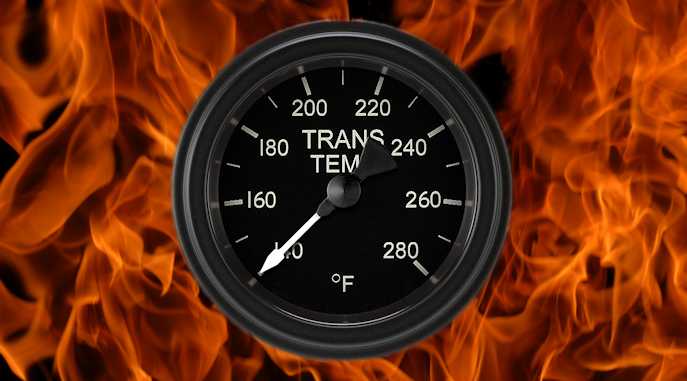
See what I mean about this topic being a can of worms? Most any placement is valid given what you're emphasizing or looking for. The temp of the fluid being pulled into the trans is what is most important to me since that affects the longevity of the part I care about. I do not care about the fluid, it's not the expensive part of the system. If all that you're concerned with is how hot the torque converter is getting the fluid, then the cooler supply line is probably the best place. (FWIW this sort of thing is a daily aspect of my job.) Placing the sensor down or something below horizontal makes the system self-bleeding of air. Eventually the air temp will equal that of the fluid, but there will always be a delay (hysteresis). That air bubble will act to insulate the sensor from the fluid. If it is placed with the sensor up then there is a pocket where an air bubble can stay and never get bled out of the cooler lines. Another thing to be careful with is the orientation of the 'T'. Most 'T' fittings when "filled" with a temp sensor do not have a lot of fluid flow room left over. At that pressure it doesn't take much to significantly block the flow of the fluid. The pressure in cooler lines is typically about 15-20 psi. The fluid in the pan will nearly always be hotter.Īnother thing to be aware of is cooler line restriction. So the temp of the fluid in the return line is not indicative of what the temp of the fluid in the pan is. Some of it dripped down out of the transmission's various bearings & clutches. Keep in mind that the trans pan is a volume of fluid and that not all of the fluid in the pan went thru the cooler on it's last trip through the transmission. Anyone know such a product that can be sourced fairly easily? I'm not having trouble locating one.Ĭlick to expand.More accurate than what? Someone suggested a thermo sensor based gauge and mounted the sensor on the outside the (probably) outgoing line. Which gets me back to something like a customer T fitting. I'd really prefer a digital gauge with a very wide range, like Autometer's 0-300 range gauge. If the lower temp range oil temp gauge could work with that same sendor, it's an alternative, but not a whole lot better. The problem is, so far VDO is the only manufacture that makes that size sender and it's only for their 150-400 degree trans gauge, which is way out the useful range to me. A sender that would fit the drain plut would be a cinch to install. Although it would probably solve a lot of problems.īuilding a T-fitting and splicing into the output line to the cooler seems like a more common option, but I definately don't want to cut hard pipe, and I'm not sure of a good place on the 80 to try ti mount this set up. It's the sender that's the tricky part here.
#How to install transmission temp gauge how to
I mean, most of use can figure out how to wire a positive, ground and light wire. But then there's a few that have kinds of details on how to wire up a gauge, but not even a hint about where the sender went. It's most frustrating when people say they've installed a tranny gauge and absolutely no detail, not even brand of gauge. There are a few threads, but most lack any detail. I've spent hours searching the net, including all over mud for any bit of information I could come up with. I even push it around a bit with the torch rather than use more heat. I use three healthy TIG tack welds around the OD of the nipple, and then use a continuous bead of Silicon-Bronze around the parting line on the inside using only just barely enough heat to get the filler to 'wet-out' & flow. The OD of the step is some easy size found on a Unibit (ideal for drilling sheet metal) and the width of the step is equal to the pan's thickness. I buy an NPT nipple from McMaster and lathe a step in the end to be welded to the pan.
#How to install transmission temp gauge install
My preferred install method is beyond the average garage fabricator's tools, but I'll mention it for reference or consideration.

That is the fluid that the trans is drawing from, so that is the temp that is critical as far as I'm concerned. I think your idea of it being in the pan is best, and a large builder of GM late model trans thinks so too as that is where they want the sender located for the gauge sent with each trans. I don't think the odds of actually witnessing that flash are very good. Their idea being that they'll see if the converter flash-heats the fluid to an exceptional temperature. Some want it in the return, but most want it in the supply. There are many who say the sender should be in the cooler lines. This is one of those cans of worms topics.


 0 kommentar(er)
0 kommentar(er)
